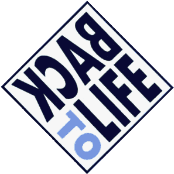Primary Care Workers- Cardiopulmonary Resuscitation Equipment
The following extracts have been taken from the Resuscitation Council UK Website, and do not constitue the full guidelines.
Resuscitation equipment
"Resuscitation equipment will be used relatively infrequently and there is much to be said for selecting items that are both easy to use and maintain. Staff must know where to find equipment at the time it is needed and training in its use must be undertaken to a level appropriate to the individual's expected role.
Each practice should have a named individual with responsibility for checking the state of readiness of all resuscitation drugs and equipment, including the AED on a regular basis, ideally once a week. In common with drugs, disposable items like the adhesive electrodes have a finite shelf life and will require replacement from time to time if unused.
Defibrillators:
Modern ‘first responder' AEDs are light, portable, compact, relatively inexpensive and easy to use. Most machines currently available perform self-checks and advise if maintenance or replacement of batteries is required. The success of defibrillation is crucially time dependent, with the chances of successful resuscitation declining by about 10% every minute attempted defibrillation is delayed. Attempted defibrillation will usually be performed earlier when practices have their own defibrillator rather than depending on the ambulance service to provide one.
Every healthcare practice should be equipped with an automated external defibrillator (AED) and appropriate arrangements should exist to ensure that it is readily available in the surgery whenever it may be required. Equally, there should always be someone capable of using the AED whenever patients may be in the building. An AED should also be available to those providing medical cover outside normal practice hours, whether working as individuals, in Primary Care Centres or community hospitals, as part of a deputising service, co-operative or any other similar out-of-hours service. Other basic resuscitation equipment for managing the airway and administering drugs should also be accessible.
An AED should therefore be available wherever and whenever sick patients are seen. It should be placed in the surgery and taken to patients visited elsewhere if it seems likely that there is a chance of cardiopulmonary arrest occurring. After the machine is used the manufacturers instructions should be followed to return it to a state of readiness with the minimum of delay. Disposable items must be reordered to ensure adequate stocks are available.
Airway management:
Expired air ventilation is the minimum standard expected and should be performed with a pocket mask incorporating a one way valve to prevent secretions from the patient reaching the rescuer. Other simple airway barrier devices do not permit ventilation to be performed as effectively as the pocket mask and many provide significant resistance to lung inflation.
Devices such as the oro-pharyngeal airway (Guedel airway) are suitable for use by those who are appropriately trained and a range of sizes may need to be kept available. For those with appropriate experience the laryngeal mask airway (LMA) may have an increasing role in management of the airway for unconscious patients outside hospital.
Tracheal intubation and the use of other advanced airway techniques are only appropriate for use by those who have undergone extensive training and who practice the skills regularly.
Oxygen:
Current resuscitation guidelines emphasise the use of oxygen, and this should be available whenever possible. Oxygen cylinders should be appropriately maintained and national safety standards followed. Each practice should have guidelines that allow non-medical staff to administer high flow oxygen in certain medical emergencies such as cardiopulmonary arrest.
Suction:
The requirement for batteries is a disadvantage with equipment that is likely to be used infrequently. Similarly, the need for mains electricity adds greatly to cost and restricts the location where the device can be used. For these reasons simple, mechanical, portable, hand-held suction devices are recommended.
Drugs:
Few drugs have been shown to materially influence the outcome of cardiopulmonary arrest and few are recommended for routine use. Epinephrine/adrenaline (1mg intravenously) has an established role to increase the effectiveness of basic life support and is recommended in current international resuscitation guidelines. Atropine has an established role in the treatment of bradycardia, asystole and pulseless electrical activity (PEA) at a slow rate. The dose in asystole and slow PEA is 3mg given once only (lower doses are often effective in the treatment of bradycardia). The minimum standard is to have both these drugs available. Amiodarone is recommended for ventricular fibrillation resistant to defibrillation - the dose is 300mg intravenously. There is no established role for the use of alkalising agents, buffers or calcium salts before hospital admission. The use of naloxone is appropriate in suspected cases of opiate overdose causing respiratory arrest.
Drugs should be given by the intravenous route, preferably through a catheter placed in a large vein, for example in the antecubital fossa, and flushed in with a bolus of IV fluid. In an emergency, drugs may be administered from a syringe through a needle sited in a large peripheral vein. The risk of extravasation in this circumstance is acceptable if the patient is the victim of cardiopulmonary arrest. Many drugs may be given via the bronchial route if a tracheal tube is in place; for epinephrine/adrenaline and atropine the dose is double the IV dose.
Minimum Recommended Equipment
Oxygen mask with reservoir bag
Pocket Mask and one way valve
Automated External Defibrillator (AED) with electrodes and razor
Syringe and needles
Oxygen cylinder (of suitable size to deliver high flow o2 for a minimum of 30 minutes)
Epinephrine/Adrenaline
Atropine
Tape
Gloves
Sharps box
Scissors
Suction
Saline flush
Tissues
Additional Equipment
Intravenous cannulae
IV fluids
Self-inflating bag with reservoir (BVM) - Adult
Self-inflating bag with reservoir (BVM) - Child
Oropharyngeal (Guedel) airways
Amiodarone
Naloxone
To view the full version of 'Quality standards for cardiopulminary resuscitation practice and training' please visit the Resuscitation Council Uk website.
To speak to one of the Back to Life team directly concerning your training requirements, please do not hesitate to Contact Us.
